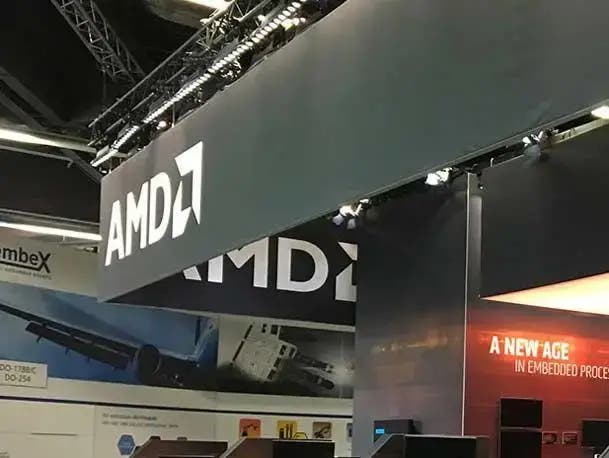AMD Nears A Quarter Of x86 CPU Market Share For PCs And Servers
by nlqip

While the latest x86 CPU market share report reflects the ongoing threat AMD poses to Intel at a challenging time in the latter company’s history, it wasn’t all bad news for Intel.
AMD is 1 point away from reaching a quarter share of the Intel-dominated x86 CPU market for PCs and servers combined after making gains in the third quarter.
AMD’s share in the overall x86 CPU market grew 2.7 points sequentially and 4.3 points year-over-year to 24 percent against Intel’s 76 percent share in the third quarter, when not counting shipments of semi-custom, embedded and IoT products, according to the latest report from CPU-tracking firm Mercury Research.
[Related: Analysis: Intel’s AI Chip Efforts Stall As AMD Gets A Boost Against Nvidia]
The market share movements represent shipments of CPUs for servers, laptops and desktop computers—three key battlegrounds that are the largest sources of revenue for Intel and AMD. While the latest report reflects the ongoing threat AMD poses to Intel at a challenging time in the latter company’s history, it wasn’t all bad news for Intel.
AMD achieved nearly a quarter of x86 CPU market share in part by increasing its desktop segment share, where it made the largest gain, by 5.7 points sequentially and 9.6 points year-over-year to 28.7 percent against Intel’s 71.3 percent share.
In the laptop segment, the Santa Clara, Calif.-based chip designer grew share by 2 points sequentially and 2.8 points year-over-year to 22.3 percent against Intel’s 77.7 percent.
While AMD’s share in these segments were not records, its share in the overall PC segment reached an all-time high in the third quarter, growing 2.9 points sequentially and 4.6 points year-over-year to 23.9 percent, Mercury Research President Dean McCarron told CRN in an email. (AMD’s desktop record was 29.1 percent in the fourth quarter of 2006 while its laptop record was 24.8 percent in the second quarter of 2022.)
As for servers, AMD faced greater competition from Intel but still managed to eke out a 0.1-point sequential increase and a 0.9-point year-over-year increase, which brought its share to 24.2 percent against Intel’s 75.8 percent in the segment.
This also fell short of AMD’s all-time high market share in the server CPU segment, which was 26.2 percent in the second quarter of 2006, according to McCarron.
What Happened In The PC And Server Segments
AMD was able to make a significant gain in the desktop CPU segment thanks to seasonal growth while Intel dealt with a decline in shipments, McCarron said.
Intel has blamed this decline on partners such as OEMs and system builders working through existing inventory before making new purchases, according to the researcher.
McCarron said he saw “considerable activity” around AMD’s new Ryzen 9000 series desktop processor and noticed an improvement in sales for the previous generation.
However, Mercury Research expects Intel will regain desktop segment share once the company’s partners work through existing inventory.
AMD and Intel experienced a similar story in the laptop segment, with the former experiencing “well above seasonable increases” in CPU shipments, according to McCarron. However, Intel suffered from a smaller inventory correction while achieving “low but positive growth.”
“Both Intel and AMD saw significant ramps of new mobile products” — Core Ultra 100 and Ryzen 8040, respectively — while also shipping the newer Core Ultra 200V and Ryzen AI 300 processors in small numbers, according to McCarron.
The server segment was a different and more positive story for Intel.
“AMD and Intel both experienced significant server CPU shipment growth, with Intel seeing gains in both data center and networking/communications segments,” McCarron wrote.
The researcher said AMD’s share increase was almost “negligible” because both companies had “very similar growth rates.” He also noted that Intel’s standard Xeon server CPUs “slightly outpaced” AMD’s EPYC processors while CPU shipments out of the semiconductor giant’s Network and Edge Group “recovered.”
How Semi-Custom And Embedded Products Change The Story
While semi-custom, embedded and IoT products represent smaller businesses for Intel and AMD, the shipments of CPUs in those segments were different enough to create a different picture when factoring those into the x86 CPU market.
Through this lens, AMD’s x86 CPU market share was 25 percent, which was 0.5 points higher sequentially but 5.6 points lower year-over-year. Intel’s share was 75 percent.
McCarron said AMD suffered when factoring in non-PC and non-server CPUs because of continuous declines in semi-custom shipments while Intel “saw a strong increase in IoT product shipments.” AMD’s semi-custom business has suffered mainly because Microsoft’s and Sony’s latest video game consoles that use AMD chips are now several years into their respective lifecycles, resulting in lower demand from consumers.
Source link
lol
While the latest x86 CPU market share report reflects the ongoing threat AMD poses to Intel at a challenging time in the latter company’s history, it wasn’t all bad news for Intel. AMD is 1 point away from reaching a quarter share of the Intel-dominated x86 CPU market for PCs and servers combined after making…
Recent Posts
- Windows 11 KB5046740 update released with 14 changes and fixes
- Analysis: Nvidia Made A Lot More Money Than Intel, AMD Combined Last Quarter
- Microsoft pulls WinAppSDK update breaking Windows 10 app uninstalls
- CISA says BianLian ransomware now focuses only on data theft
- Microsoft disrupts ONNX phishing-as-a-service infrastructure
